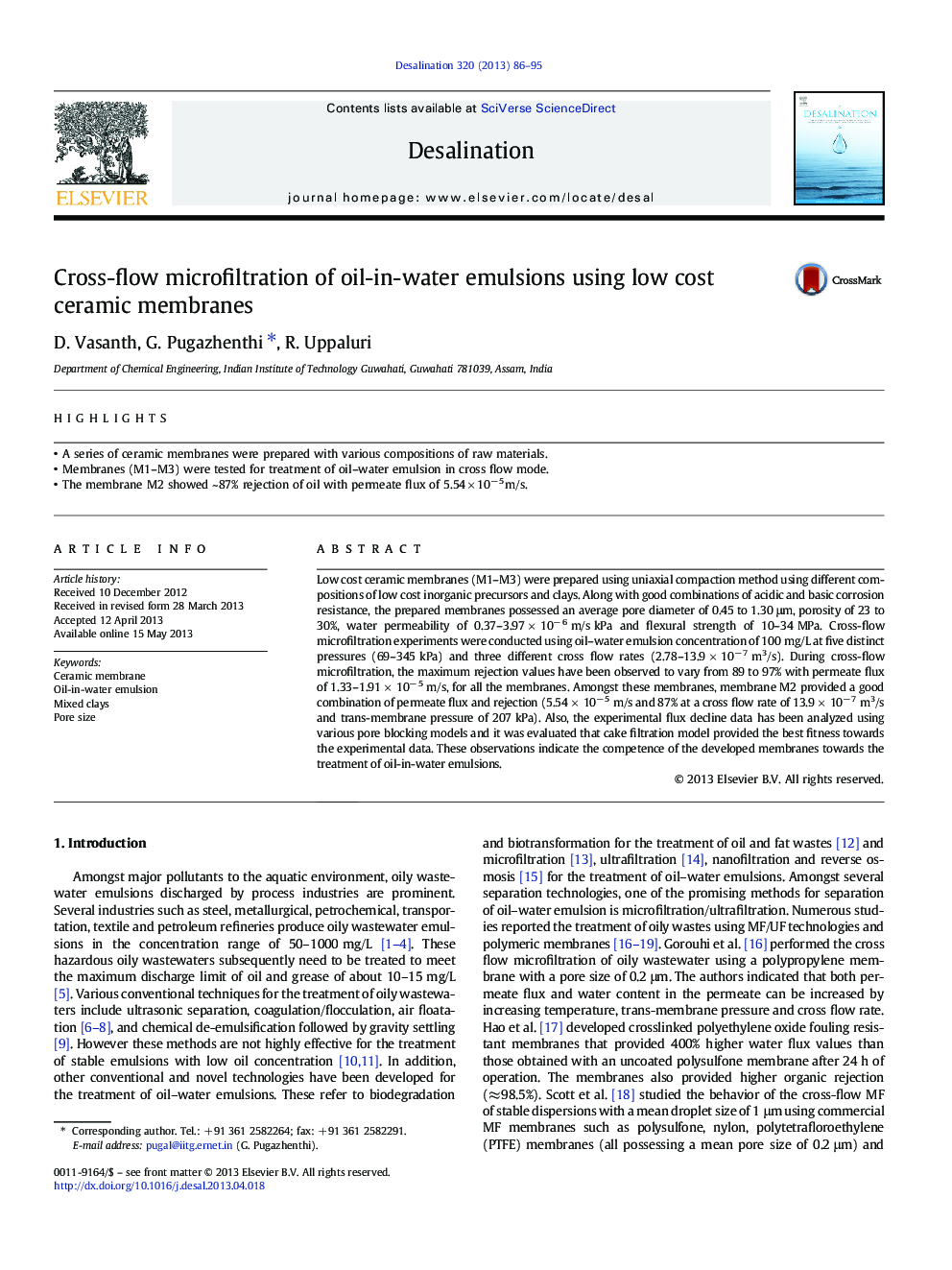| Article ID | Journal | Published Year | Pages | File Type |
|---|---|---|---|---|
| 624019 | Desalination | 2013 | 10 Pages |
•A series of ceramic membranes were prepared with various compositions of raw materials.•Membranes (M1–M3) were tested for treatment of oil–water emulsion in cross flow mode.•The membrane M2 showed ~ 87% rejection of oil with permeate flux of 5.54 × 10− 5 m/s.
Low cost ceramic membranes (M1–M3) were prepared using uniaxial compaction method using different compositions of low cost inorganic precursors and clays. Along with good combinations of acidic and basic corrosion resistance, the prepared membranes possessed an average pore diameter of 0.45 to 1.30 μm, porosity of 23 to 30%, water permeability of 0.37–3.97 × 10− 6 m/s kPa and flexural strength of 10–34 MPa. Cross-flow microfiltration experiments were conducted using oil–water emulsion concentration of 100 mg/L at five distinct pressures (69–345 kPa) and three different cross flow rates (2.78–13.9 × 10− 7 m3/s). During cross-flow microfiltration, the maximum rejection values have been observed to vary from 89 to 97% with permeate flux of 1.33–1.91 × 10− 5 m/s, for all the membranes. Amongst these membranes, membrane M2 provided a good combination of permeate flux and rejection (5.54 × 10− 5 m/s and 87% at a cross flow rate of 13.9 × 10− 7 m3/s and trans-membrane pressure of 207 kPa). Also, the experimental flux decline data has been analyzed using various pore blocking models and it was evaluated that cake filtration model provided the best fitness towards the experimental data. These observations indicate the competence of the developed membranes towards the treatment of oil-in-water emulsions.
